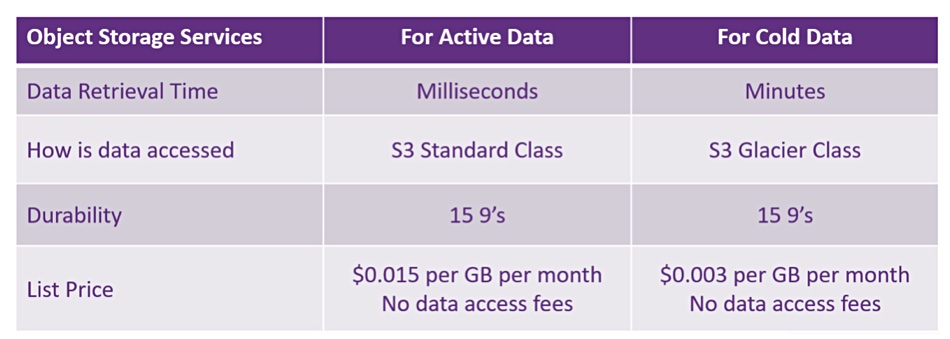Quantum is introducing an object-storage-on-tape tier to its ActiveScale object storage system, providing an on-premises Amazon S3 Glacier-like managed service offering.
The idea is to have a single namespace covering ActiveScale disk and tape storage with multi-site data durability, high capacity, low cost, and policy-based data transfer to the cold storage — all available through a subscription to a fully-managed service.
Bruno Hald, Secondary Storage GM at Quantum, provided an announcement quote: “ActiveScale is now the industry’s first and only on-premises object store system with an integrated cold storage class based on tape technology. In short, this means it dramatically lowers costs, consumes little power, and reliably stores data for decades.”
Jamie Lerner, Quantum’s chairman and CEO, said: “The innovations announced today enable us to combine Quantum hyperscale tape architectures with Quantum software, package all of this technology as a cloud service that can be deployed anywhere and offer it to enterprises and cloud providers who are facing the same challenges as hyperscalers.”

Data durability
Quantum says the cold storage class has up to 19 nines of data durability. Backblaze says its 11 nines durability has a .99999999999 per cent chance of data loss — “if you store one million objects in B2 for ten million years, you would expect to lose one file.” So, with 19 nines of durability, your data is so much safer that the chances of any data loss are astronomically remote.
According to an ActiveScale datasheet, the extra durability comes from Quantum’s Reed-Solomon-based two-Dimensional Erasure Coding (2D EC) and a RAIL (Redundant Arrays of Independent Libraries) architecture. The 2D EC distributes objects and parity data shards within and across tapes and libraries to maximise recoverability from data loss while not having too much extra data stored, down to 15 per cent. Quantum says restoring an object requires only a single tape read, and 2D EC uses local reconstruction codes to recover from nearly all tape and drive errors using just a single tape.
RAIL provides parallel access to multiple tape libraries that can be geo-distributed, high availability and scalability. A 3-geo system has three separate libraries in geographically dispersed locations. The 2D EC allows for hierarchical data spreading with object data split into chunks written across 18 drives in the three data centres — an 18/8 erasure code policy in which objects can be decoded from just ten chunks. The system can recover from three tapes being lost.
Alternative deployments include a single datacentre or two datacentres with data replication.
Lifecycle policies can be used to select objects in the Active Storage class for transfer to cold storage. Objects sent to the cold storage class (tape) by an application direct from other storage are first stored in the active storage class (disk) for fast acknowledgement. Then they are batched and interleaved with read requests before being sent to cold storage so as to optimise tape streaming performance. Object restoration from the cold storage class will typically occur in less than five minutes.
Object data buckets can also be migrated to the public cloud if desired.
Services
Quantum is providing Object Storage Services to deliver this ActiveScale technology, with two classes of service. There is one for for active data and a second for cold data, with an all-inclusive two-tier pricing model:

Service delivery is aided by Quantum’s AIOps software, Cloud-Based Analytics (CBA) with its predictive analytics based on device sensor telemetry, and the MyQuantum service delivery facility which provides access to CBA and the AIOps feature.
Find out more about Active Scale Cold Storage on Quantum’s mini-site.
Comment
Other object-to-tape technologies include Germany’s PoiNT Systemes with S3-supporting Archival Gateway software, which supports Quantum Scalar libraries as target tape systems. It also uses erasure coding.
A second competitor to Quantum is Fujifilm’s Object Archive which has an S3 API and uses OTFormat — an open-source file format — to store objects and their metadata on tape. Scality’s Zenko is the object server used inside this product. PoiNT Systemes said in June last year that it will support Fujifilm’s Object Archive format.
Quantum is introducing its cold object storage as an integrated offering in its ActiveScale product line which itself is integrated in Quantum’s overall StorNext portfolio, making it a potential add-on sale to existing Quantum customers. The managed services angle helps make it an affordable add-on as well.
Will we see other on-premises object storage providers add a tape storage archive tier to their products? The easiest way for them to do that would be through a partnership with a tape library vendor, such as HPE, IBM and Spectra Logic. Will they or won’t they? We will have to wait and see.








